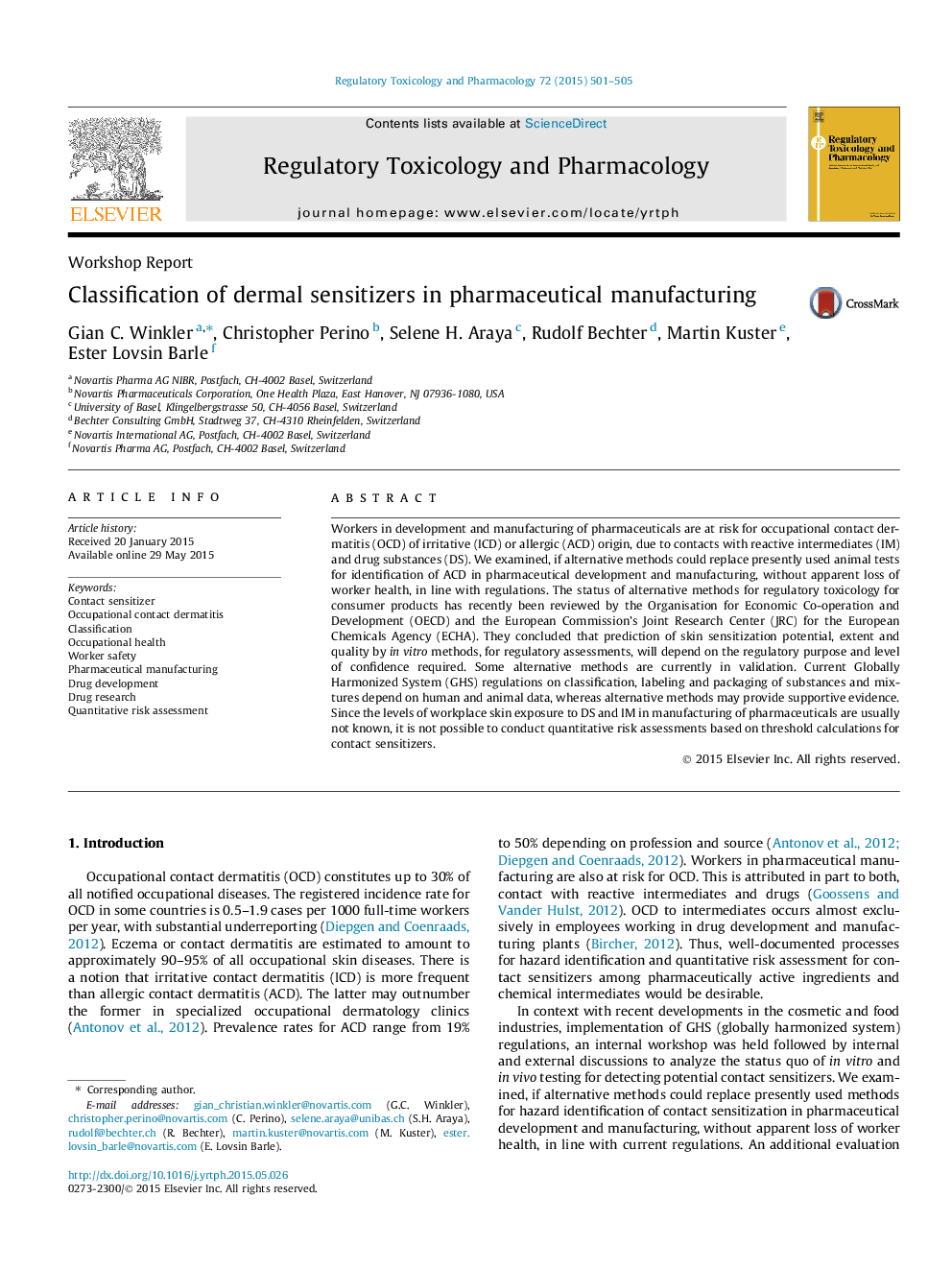| Article ID | Journal | Published Year | Pages | File Type |
|---|---|---|---|---|
| 5856615 | Regulatory Toxicology and Pharmacology | 2015 | 5 Pages |
Abstract
Workers in development and manufacturing of pharmaceuticals are at risk for occupational contact dermatitis (OCD) of irritative (ICD) or allergic (ACD) origin, due to contacts with reactive intermediates (IM) and drug substances (DS). We examined, if alternative methods could replace presently used animal tests for identification of ACD in pharmaceutical development and manufacturing, without apparent loss of worker health, in line with regulations. The status of alternative methods for regulatory toxicology for consumer products has recently been reviewed by the Organisation for Economic Co-operation and Development (OECD) and the European Commission's Joint Research Center (JRC) for the European Chemicals Agency (ECHA). They concluded that prediction of skin sensitization potential, extent and quality by in vitro methods, for regulatory assessments, will depend on the regulatory purpose and level of confidence required. Some alternative methods are currently in validation. Current Globally Harmonized System (GHS) regulations on classification, labeling and packaging of substances and mixtures depend on human and animal data, whereas alternative methods may provide supportive evidence. Since the levels of workplace skin exposure to DS and IM in manufacturing of pharmaceuticals are usually not known, it is not possible to conduct quantitative risk assessments based on threshold calculations for contact sensitizers.
Keywords
Related Topics
Life Sciences
Environmental Science
Health, Toxicology and Mutagenesis
Authors
Gian C. Winkler, Christopher Perino, Selene H. Araya, Rudolf Bechter, Martin Kuster, Ester Lovsin Barle,
